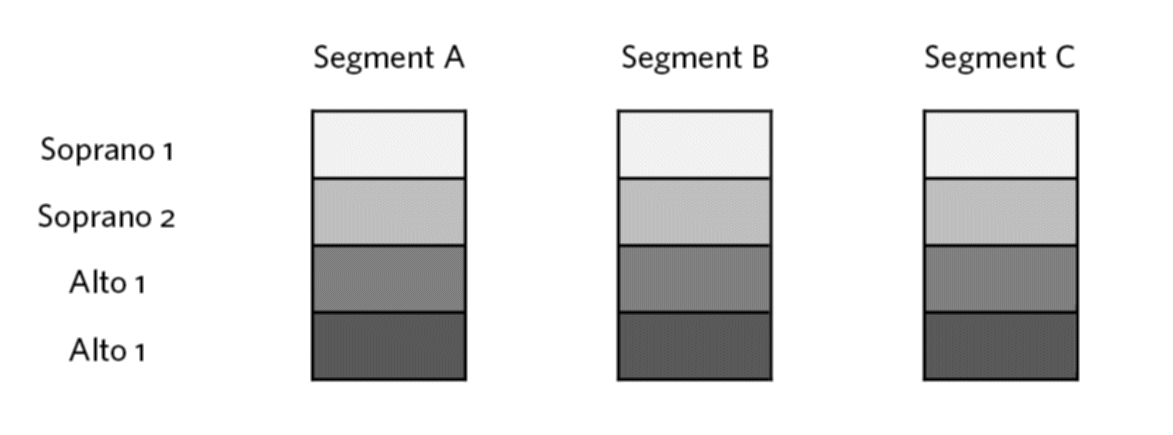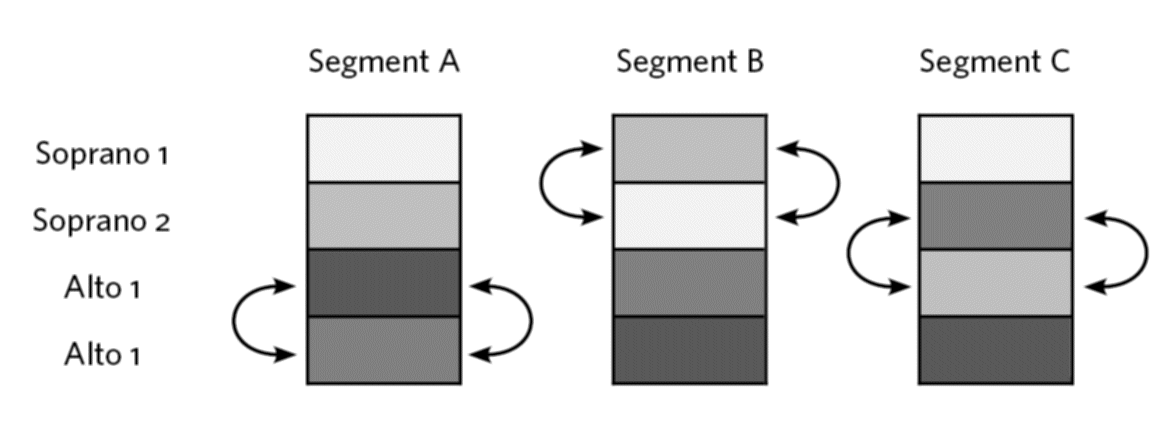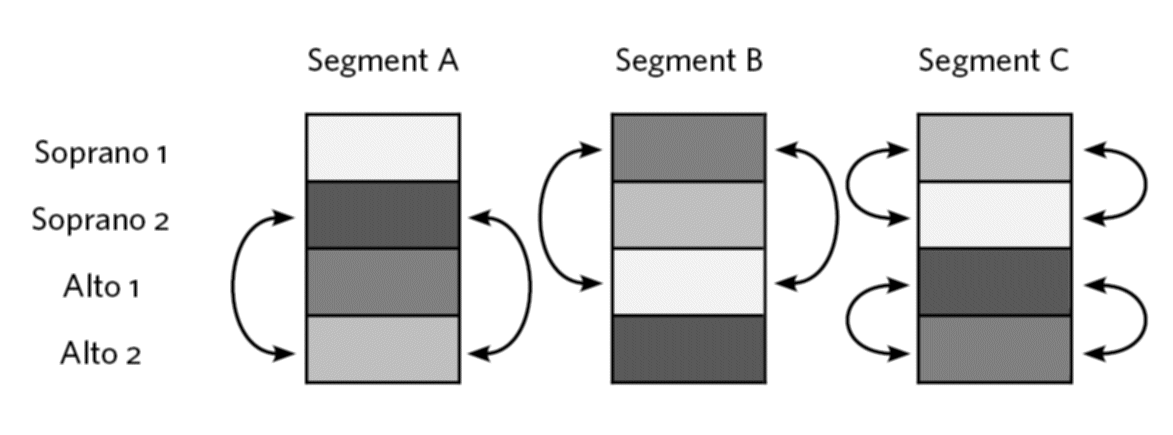 For singers, it is nice to be able to use their full vocal range. A singer who is singing low notes all the time, tends to develop a very dark sound. And reversedly, a singer who has to sing high notes all the time, tends to lose warmth. When the voices within a choir vary in color, blending gets less and intonation gets harder. Apart from that, it is much more challenging and accomplishing for singers if they can use their full range.
For singers, it is nice to be able to use their full vocal range. A singer who is singing low notes all the time, tends to develop a very dark sound. And reversedly, a singer who has to sing high notes all the time, tends to lose warmth. When the voices within a choir vary in color, blending gets less and intonation gets harder. Apart from that, it is much more challenging and accomplishing for singers if they can use their full range.
In arranging, it’s wise to keep this in mind. For example, it’s good practice to write low notes for the sopranos as well. One way to do this, is to let all parts sing in unison. Another way is to write low accompanying notes for the soprano, if the melody is in another part.
Basses often have to sing a lot of low notes. On the piano those notes indeed sound good. But remember, in arranging for choir there is a lot to take into consideration. In order to make singing comfortable for the basses, it’s wise to sometimes settle for bass notes which lie less deep.
Female choir
In particular in arranging for woman voices, it is difficult to write a good range for all parts. The reason for that is as follows. For writing nice chords, a lot of times you need a range of more than an octave. In that case, the highest part thus lies more than an octave higher than the lowest part. However, the range of the soprano and alto only lie a fifth or a fourth apart approximately. This means that in making nice chords you are ‘overstretching’ the ranges of the female voices.
Yet, there is way out of this dilemma. It is possible to prevent the low altos from always singing very low notes and the high sopranos very high notes. The trick is to switch the parts regularly.
Suppose you are writing an arrangement for ssaa. The idea is to switch parts that lie next to each other in a few segments within the arrangement. For example, you might switch soprano 2 and alto 1 in a certain spot. The soprano 2 then gets to sing some rather low notes and the range of alto 1 gets less low. The best place to switch the parts is when the original notes of the alto 1 are not extremely low, because then it might get too low for alto 1. In similar way as described above, elsewhere in the score, you might switch soprano 1 and soprano 2 or switch alto 1 and alto 2.
Graphic
Below the idea of switching parts is graphically represented. High notes are indicated with light colors and low notes with dark colors. Imagine you are working on an ssaa arrangement, and soprano 1 is on top all the time and soprano 2 is second from the top, et cetera. The division then looks as follows:
After switching parts in all three segments, the parts might look like this:
In all parts the range has now become larger. (Notice for example the soprano 1 now has some darker colors.) Yet, the overall range of soprano 1 is still the highest and that of alto 2 is still the lowest.
Even more switches
For the people who are theory minded, here is a version with even more switches, which results in an even better division of voices. In this case we allow ourselves to switch parts even when they are not adjacent to each other:
In switching parts that lie further from each other, care should be taken that the parts remain within the right range of the voices. For example, in the switch in segment A, the low notes should be reachable for soprano 2.
In reality, creating an arrangement is a lot more complicated than in such a scheme, of course. That’s why it’s smart to hold this technique in mind during the full process of writing, and to switch parts a couple of time when possible.